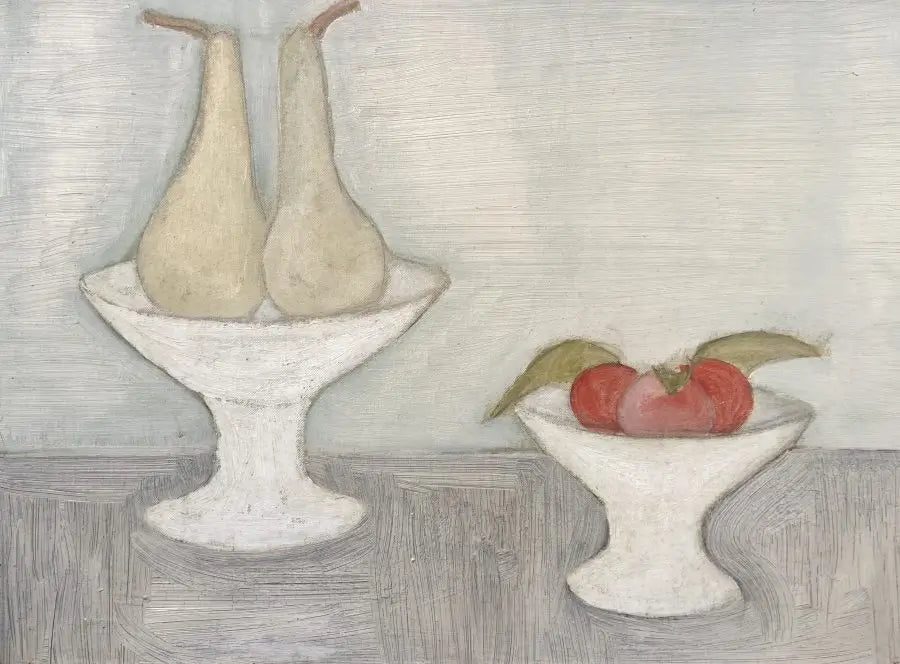

Elspeth Spottiswood
Still Life
Oil and Polyviny on board, signed on reverse
Image size: 15 1/2 x 11 3/4 inches (39.5 x 30 cm)
Original frame
Exhibited
Pictures for Scottish Schools, 1967
The grey-hued painting gives a feel of pristine tranquility. Without any suggestion of a ledge or a tabletop, indispensable for conventional still-life, the opaque foreground is painted in light steel grey. Free from the bounds of perspective, the objects are stripped down to their most basic shapes to be manoeuvred in the space of minimalism evocative of a place that is vastly timeless. The background and foreground are no longer distinguished except for a brief tonal expression. Given the bare, essential, and timeless traits, everything combined in the light-hued picture conveys a kind of utopian serenity.
Elspeth Spottiswood
Born in Aberdeenshire, the painter Elspeth Spottiswood was a solitary child who spent much of her time drawing and painting. After World War II she attended Camberwell & Chelsea Schools of Art, only to be deeply disappointed by the narrow and stuffy curriculum. By chance she met the artist Oscar Kokoschka, who was living in London at the time, and who gave her great encouragement.
In 1949 she married the late festival founder and agriculturist-poet Michael Milburn, and they moved to Cornwall in 1961, settling in Bocaddon, Lanreath, Cornwall. Here they brought up four sons and one daughter. He died in 1993.
Elspeth’s subject matter was inspired by landscape, especially that of Cornwall. Strongly influenced by the work of Giorgio Morandi, her work was primarily concerned with distilling the essence of a landscape or object, and paring it right down to the minimal components. She was great friends with Lionel Miskin and Patrick Hayman.
‘For me images become significant when they contribute to creating a memory world of the imagination in which experience is contained and given meaning, as in the meeting of water and sky, the pale emptiness of sky and sea, the darkness of a mining valley, the pattern of objects on a table. It is this reality I try to explore, neither the place nor the object in itself but the way in which the image made of it can have its own imaginative reality.’ (Elspeth Spottiswood, 2006)
Latterly she translated works from the Italian by Dacia Maraini (Woman at War, etc.) with the late horticulturist and garden writer, Dick Kitto (d 1999).



